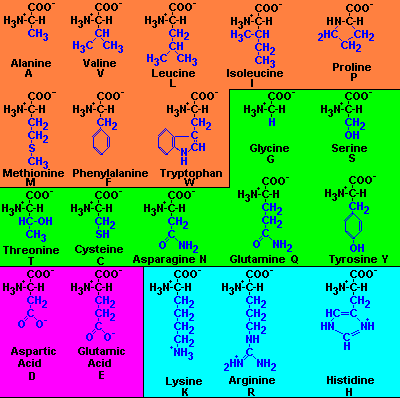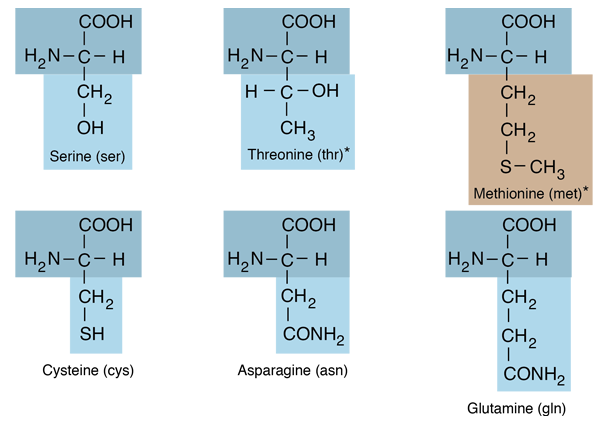


A protein may be composed of a single polypeptide or it may be made up of several subunits (e.g. No matter how many amino acids are added together, the polypeptide will always have NH2 at one end, the N terminus and COOH at the other, the C terminus. Most polypeptides contain less than 2000. The largest polypeptide contains 5000 amino acids. Any chain 25 amino acids is a polypeptide. The process of condensation and joining amino acids together may be repeated ad infinitum to give tripeptides (NH 2-CH(R)-CONH-CH(R)-CONH-CH(R)-COOH)and tetrapeptides and so on. Hydrolysis reactions do occur in a single step within cells. Literally, hydro (water) lysis (splitting or breaking). Hydrolysis is the opposite process, water is added and a molecule is broken. This is a condensation reaction, so called because water is released in the joining process (condensation reactions don't occur in cells in a single step). When amino acids are connected together to make a polypeptide molecule OH is removed from the COOH group of one amino acid and H from the NH 2 group of the other to give H 2O and NH 2-CH(R)-CONH-CH(R)-COOH, a dipeptide (the middle bit of the amino acid in a polypeptide is now called an amino acid residue).

Cysteine has an SH group in its side chain which can link to SH groups in other cysteine residues and thus link two parts of a polypeptide (see tertiary structure). Phenylalanine, tyrosine and tryptophan have aromatic (ring) side chains and are very hydrophobic. Alanine, valine, leucine, isoleucine and methionine have aliphatic, non-polar side chains and are therefore hydrophobic. The nature of the 'R' group determines how hydrophilic or hydrophobic the amino acid is. Glycine, alanine, valine, leucine, isoleucine, methionine, phenylalanine, tyrosine, tryptophan, aspartic acid, glutamic acid, lysine, arginine, histidine, asparagine, glutamine, serine, threonine, cysteine and proline. Polypeptides are made up of combinations of 20 different amino acids (There are lots of others that don't occur in proteins). if R = H then the amino acid is glycine, if R = CH 3 then the amino acid is alanine.). Amino acids have the general formula NH 2-CH(R)-COOH, where R is anything (e.g. Polypeptides are a chain of amino acids connected together. Proteins homeostasis introduction Instant Protein Notes


 0 kommentar(er)
0 kommentar(er)
